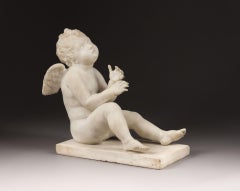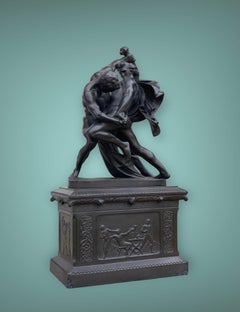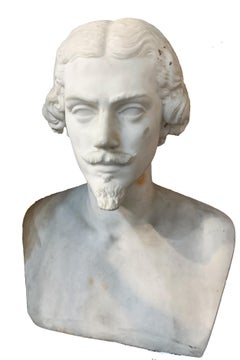Sculptures
Mid-19th Century Sculptures
Marble
1860s Academic Sculptures
Sandstone
Mid-19th Century Academic Sculptures
Marble
1830s French School Sculptures
Marble, Bronze
Mid-19th Century Sculptures
Porcelain
1860s French School Sculptures
Bronze
1850s Sculptures
Marble
1860s French School Sculptures
Terracotta
1850s Sculptures
Marble
1860s French School Sculptures
Bronze
Mid-19th Century French School Sculptures
Bronze
Mid-19th Century French School Sculptures
Bronze
1840s French School Sculptures
Bronze
1860s Realist Sculptures
Bronze
Mid-19th Century Rococo Sculptures
Porcelain
Mid-19th Century Realist Sculptures
Bronze
1860s French School Sculptures
Bronze
1850s Other Art Style Sculptures
Ceramic
1860s French School Sculptures
Bronze
Mid-19th Century Sculptures
Marble
Mid-19th Century Sculptures
Bronze
Mid-19th Century Sculptures
Marble
1860s Realist Sculptures
Bronze
Mid-19th Century Academic Sculptures
Bronze
Mid-19th Century Realist Sculptures
Bronze
Mid-19th Century Academic Sculptures
Bronze
Mid-19th Century Sculptures
Marble, Metal
1860s Academic Sculptures
Marble
1850s American Realist Sculptures
Bronze
1860s Academic Sculptures
Porcelain
Mid-19th Century Realist Sculptures
Bronze
Mid-19th Century Sculptures
Bronze
Mid-19th Century Realist Sculptures
Bronze
Mid-19th Century Abstract Expressionist Sculptures
Bronze
1860s Academic Sculptures
Bronze
1850s Sculptures
Marble
1840s Academic Sculptures
Marble
Mid-19th Century Sculptures
Bronze
1850s Sculptures
Terracotta
Mid-19th Century Romantic Sculptures
Marble
1840s Realist Sculptures
Bronze
1850s Italian School Sculptures
Alabaster, Marble
1840s Romantic Sculptures
Bronze
1850s Sculptures
Marble
Mid-19th Century Romantic Sculptures
Bronze
Mid-19th Century Sculptures
Marble
Mid-19th Century Baroque Sculptures
Marble
Mid-19th Century Sculptures
Bronze
Mid-19th Century Romantic Sculptures
Stone, Gold
Mid-19th Century Sculptures
Metal, Bronze
Mid-19th Century Sculptures
Bronze
Mid-19th Century Realist Sculptures
Bronze
Mid-19th Century Sculptures
Metal, Bronze
Mid-19th Century Academic Sculptures
Bronze
1840s French School Sculptures
Plaster
Mid-19th Century Academic Sculptures
Bronze
1840s French School Sculptures
Plaster
Mid-19th Century Sculptures
Bronze
Nude, Abstract and Figurative Sculptures for Sale
The history of sculpture as we know it is believed to have origins in Ancient Greece, while small sculptural carvings are among the most common examples of prehistoric art. In short, sculpture as a fine art has been with us forever. A powerful three-dimensional means of creative expression, sculpture has long been most frequently associated with religion — consider the limestone Great Sphinx in Giza, Egypt — while the tradition of collecting sculpture, which has also been traced back to Greece as well as to China, far precedes the emergence of museums.
Technique and materials in sculpture have changed over time. Stone sculpture, which essentially began as images carved into cave walls, is as old as human civilization itself. The majority of surviving sculpted works from ancient cultures are stone. Traditionally, this material and pottery as well as metal — bronze in particular — were among the most common materials associated with this field of visual art. Artists have long sought new ways and materials in order to make sculptures and express their ideas. Material, after all, is the vehicle through which artists express themselves, or at least work out the problems knocking around in their heads. It also allows them to push the boundaries of form, subverting our expectations and upending convention. As an influential sculptor as much as he was a revolutionary painter and printmaker, Pablo Picasso worked with everything from wire to wood to bicycle seats.
If you are a lover of art and antiques or are thinking of bringing a work of sculpture into your home for the first time, there are several details to keep in mind. As with all other works of art, think about what you like. What speaks to you? Visit local galleries and museums. Take in works of public art and art fairs when you can and find out what kind of sculpture you like. When you’ve come to a decision about a specific work, try to find out all you can about the piece, and if you’re not buying from a sculptor directly, work with an art expert to confirm the work’s authenticity.
And when you bring your sculpture home, remember: No matter how big or small your new addition is, it will make a statement in your space. Large- and even medium-sized sculptures can be heavy, so hire some professional art handlers as necessary and find a good place in your home for your piece. Whether you’re installing a towering new figurative sculpture — a colorful character by KAWS or hyperreal work by Carole A. Feuerman, perhaps — or an abstract work by Won Lee, you’ll want the sculpture to be safe from being knocked over. (You’ll find that most sculptures should be displayed at eye level, while some large busts look best from below.)
On 1stDibs, find a broad range of exceptional sculptures for sale. Browse works by your favorite creator, style, period or other attribute.
Read More
Art Brings the Drama in These Intriguing 1stDibs 50 Spaces
The world’s top designers explain how they display art to elicit the natural (and supernatural) energy of home interiors.
Chryssa’s 1962 Neon Sculpture Was Way ahead of the Art-World Curve
By working with lettering, neon and Pop imagery, Chryssa pioneered several postmodern themes at a time when most male artists detested commercial mediums.
How to Spot a Fake KAWS Figure
KAWS art toys have developed an avid audience in recent decades, and as in any robust collectible market, counterfeiters have followed the mania. Of course, you don’t have to worry about that on 1stDibs, where all our sellers are highly vetted.
A Giant Wedding Cake Has Us Looking at Portuguese Tiles in a New Light
At Waddesdon Manor, artist Joana Vasconcelos has installed a three-tiered patisserie inspired by the narrative tile work of her homeland. We take a look at the cake sculpture and how Portuguese tiles have been used in architecture from the 17th century to today.
These Soft Sculptures Are Childhood Imaginary Friends Come to Life
Miami artist and designer Gabriela Noelle’s fantastical creations appeal to the Peter Pan in all of us.
Hideho Tanaka Carefully Stitched Together Pieces of Paper to Make This Sculptural Textile
The Japanese fiber artist’s ‘Vanishing and Emerging Wall’ may seem innocuous — but it plays with conceptions of time.
When Art Galleries Join Together, Everybody Wins
Art associations are known for their glitzy fairs, but these organizations do a ton of work behind the scenes to help gallerists and collectors. Here, the heads of five major art associations give us the rundown of what they do.
From Yayoi Kusama’s New Show to Your Veggie Garden, Outdoor Sculpture Wows
From massive abstract forms to colorful, playful characters, these spaces prove that experiencing art alfresco is a joy.



